Blanke SecurMat the Universal uncoupling underlayment.
Blanke SECURMAT is a tear proof rolled uncoupling underlayment that provides a secure bonding surface for ceramic tile and natural stone installations on both interior floors and walls.
The Blanke SECURMAT also provides crack isolation protection that helps prevent damage to the tile covering caused by lateral substrate movement.
This light weight, easy-to-install underlayment features low elevation and requires less thinset than other rolled uncoupling products.
The Blanke SECURMAT is an ideal underlayment for both new installations and for renovations over existing substrates.
Material features:
Blanke SECURMAT is constructed from a fiberglass reinforcing mesh embedded between two layers of polyester fabric.
Substrates:
Substrate must be flat, dry, clean, and with a load bearing capacity that is sufficient for expected traffic flows. Uneven areas must be leveled out. Any loose material must be ground off. Primers for moisture sensitive substrate and self-levelers should be applied as needed. Transition height issues should be dealt with prior to applying the uncoupling layer.
INSTALLATION INSTRUCTIONS
Ensure that the substrate is clean, dry, free of bond-inhibitors and load bearing.
Cut the mat into sections and dry fit to the installation area.
Following the thinset manufacturer instructions, apply thinset to the substrate using a 5/16” V-notched trowel. Install the mat on the substrate using the flat side of a trowel or float to press the fabric into the thinset avoiding any creases and air pockets.
Adjacent sections should be butted at their edges without overlapping. After the thinset has cured under the mat, apply thinset on top of the mat and install tiles per thinset manufacturer instructions and industry standards.
• Mud beds / Dry packs / Mortar screeds
• Green cement (2 – 5 days as soon as slab can be walked on)
• Concrete (cured minimum 3 months)
• Gypsum based screeds
• Most floor heating systems
• Existing ceramic tile (must be solidly bonded and intact)
• Existing natural stone (must be solidly bonded and intact)
• Cement and lime based plaster
• Wallboard
1. Substrate must be solid, flat, load-bearing and free from bond-inhibitors. Any loose material must be ground off. Primers for moisture sensitive substrate and self-levelers should be applied as needed.
2. Using a utility knife, dry cut the mat to fit the area where the tile will be installed. Be sure to allow a minimum of 1/4″ gap where the installation meets vertical surfaces, thresholds and different floor types. Apply a normal mix of latex-modified thinset mortar (mid-grade quality or higher) to the substrate with a 5/16″ V-notched trowel.
3. Using the flat side of the trowel, press the mat into the thinset ensuring that the mat is free of air pockets and crimps in the fabric. Start at one end and continue working in one direction to avoid air pockets.
4. Butt the edges of adjacent sections tightly together.
5. Cuts can be easily made using a utility knife or a scissors.
6. Allow the thinset to set-up until hard. Traffic on the Blanke SECURMAT should be kept to a minimum while the thinset is curing. Apply latex modified thinset (midgrade
quality or higher) and install tile following the thinset manufacturer installation instructions and in accordance with industry practices in the same way as tile is installed on backer board and similar underlayment.
7. Grout the tile after allowing the curing period as recommended by the grout manufacturer. Follow the manufacturer installation instructions and industry practices
when grouting.
8. The Blanke•SECURMAT does not eliminate the need for movement joints in the tile surface and at the perimeter of the installation (see EJ171-07). The Blanke•FLOOREX and Blanke•CORNEX are prefabricated movement joints specifically designed for this purpose.
Click here to see Why Blanke SecurMat and not Schluter Ditra
Properties:
• Superior bonding surface for tile and natural stone
• Crack isolation properties (uncoupling)
• Low construction height
• Apply over existing floor coverings
• Less thinset usage
• Light weight
• Easy to cut
• Easy to install
• Suitable for all sized tile
• Less curling memory lays flat
Typical Applications:
Blanke SECURMAT is an ideal alternative to backer board underlayment used in interior residential and light commercial tiled floor applications over wood substrates.
The Blanke SECURMAT can also be used as a crack-suppression membrane on cement substrates where lateral movement and stress cracks can be a problem.
The Blanke SECURMAT is an ideal underlayment for both new installations and for renovations over most existing floor coverings.
Suitable Substrates for ceramic tile:
Wood substrates – (Plywood EGP and OSB)
• 16″ o.c. joist spacing, minimum subfloor thickness: 5/8″
• 19.2″ o.c. joist spacing, minimum subfloor thickness: 3/4″
• 24″ o.c. joist spacing, minimum subfloor thickness:
Double layer 3/4″ + 3/8″ panels Substrate deflection must not exceed L/360 for tile and L/720 for stone.
Blanke PERMAT is recommended for stone installations Concrete substrates
• Mud beds / Dry packs / Mortar screeds
• Green cement (2 – 5 days as soon as slab can be walked on)
• Concrete (cured a minimum of 3 months)
Substrates covered with stone, tile and vinyl
(consult thinset manufacturer instructions for these types of coverings)
Most floor heating systems
(please consult Blanke installation instructions)
Concrete substrates
• Mud beds / Dry packs / Mortar screeds
• Green cement (2 – 5 days as soon as slab can be walked on)
• Concrete (cured a minimum of 3 months) Substrates covered with stone, tile and vinyl (consult thinset manufacturer instructions for these types of coverings)
Most floor heating systems
(please consult Blanke installation instructions)
Technical Data:
Thickness: 0.9 mm (approx. 1/25″)
Weight: approx. 22 kegs (48.5 lbs) per 1 roll (538 sq. ft.)
Fabric Material: Polyester
Mesh Material: Extruded fiberglass
Packaging: 538 sq. ft. per roll/12 rolls per pallet
Length: 50 meters (164 lf)
Width: 1 meter (3.28 lf)
Color: Polyester fabric: white
Fiberglass mesh: blue
Robinson Floor Test rating:
Extra Heavy (TCNA-034-10: 3/4″ plywood substrate on 16″ o.c. spaced joists)
Watch the Video part 1 – Watch the Video part 2
More links about Blanke Corporation
Blanke UNI-Mat PRO vs. Schluter Ditra – All about Blanke Permat – How to install UNI Mat Pro – How to install Blanke Permat – Blanke Permat Limited Warranty – Blanke SECURMAT Overview – Blanke SecurMat the Universal uncoupling underlayment
The post Blanke SecurMat the Universal uncoupling underlayment first appeared on Flooring Supply Shop Blog.

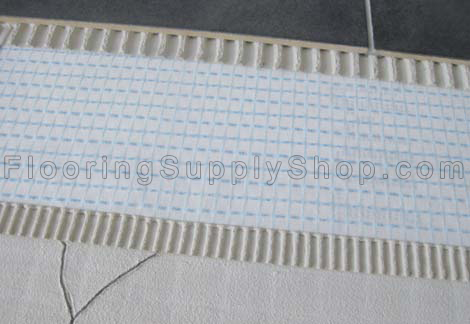
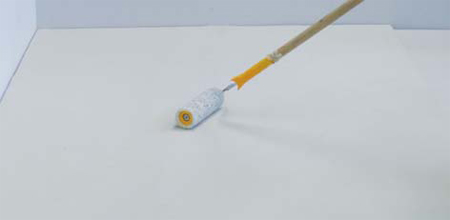
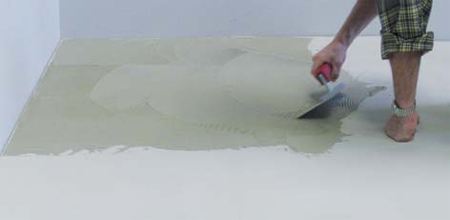
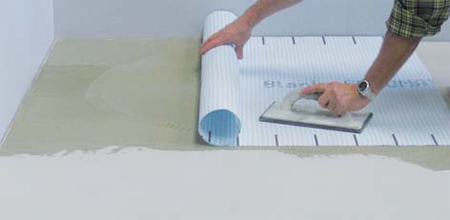
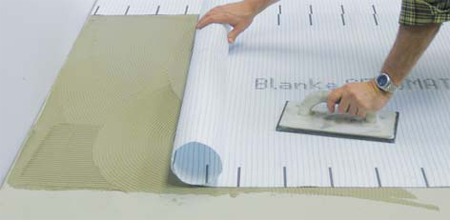
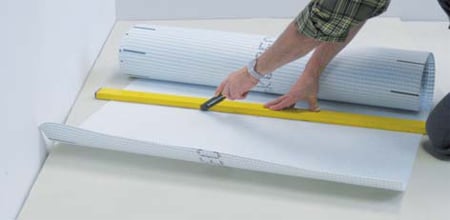
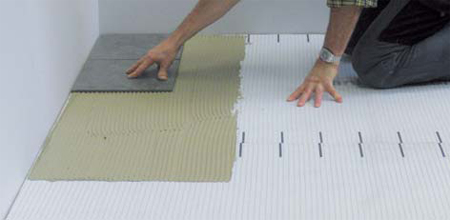
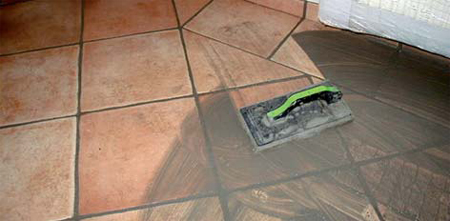
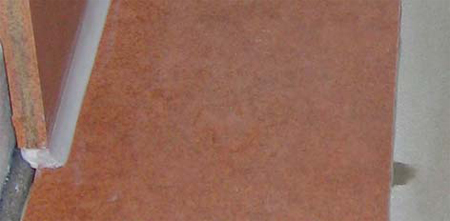
Hi, I am starting a tile project and will be using the Blanke Securmat. I almost used Ditra until I found Blanke. I have an existing sheet vinyl floor that is down real good and I will cut, sand (pre-asbestos vinyl) the area and I will also screw down into joists using rust proof screws to prevent movement in the future. My question is what thinset do I use for securing Blanke to vinyl then the 16×16 tile to Blanke? I have tiled in the past but this is my main focus living area and I NEED to make sure it’s done right the first time. Any advice is very, very welcomed!
I just wanted to write down a brief note in order to express gratitude to you for all of the precious guidelines you are giving on this site. My considerable internet investigation has finally been recognized with extremely good knowledge to go over with my friends and family. I ‘d mention that most of us readers are very much endowed to be in a magnificent community with so many marvelous individuals with good hints. I feel pretty happy to have discovered your entire weblog and look forward to plenty of more fun minutes reading here. Thanks once more for all the details.
In reply to Allan O’Connor.
The Polymer fortified and the Latex fortified are the same thing.
I’m about to start a DIY job with some Secure-Mat I just received from you. The directions specify a latex modified thin set. I bought 3 bags of Polymer modified Versibond. It says “premium grade” 2 Set. Just noticed I might not have the right stuff but I googled it and some folks say Polymer modified and Latex modified are 1 in the same. do you have a recommendation for a thinset I should use for Secure Mat? thanks!
Al O’Connor
This is a DIY job and I was planning no starting first thing in the A.M….